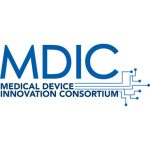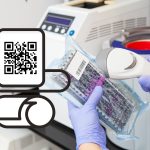For many years the medical device industry has tracked and identified its varying products; however there was no global unified system to track device name, model and other production information. The American Hospital Association (AHA) saw the immediate need to have a single identification system for medical devices.
Not long after, Congress was in agreement with the AHA and the Unique Device Identification (UDI) system was signed into law as part of the FDA Amendments Act of 2007 (the final rule was published the following year). After the final rule was implemented, the FDA imposed a series of compliance dates for UDI requirements in order to precisely identify medical devices through distribution and use.
A lot of effort is required on the part of manufacturers to be in a position to properly implement UDI; however, medical device manufacturers stand to gain significant long-term benefits from early compliance. Such advantages are improved inventory control, potential increased sales and more time to be able to identify and troubleshoot varying product issues, improved medical billing accuracy and reduced levels of fraud.
The manufacturers that are currently benefiting the most from implementing the strict UDI requirements are the ones that treat it as much more than a regulatory compliance process and as a gateway towards global regulatory harmonization with substantial benefits to both companies and patients alike.
In order for manufacturers to reap the most benefits from UDI and to ensure that they meet the remaining deadlines, it’s imperative that they plan for UDI without any delay, especially as the next compliance date in the UDI final rule is September 24, 2016.
To help manufacturers meet the upcoming UDI deadlines, the following are eight important facts to note when it comes to achieving prompt compliance.
1. Diagnostic Challenges
Using UDI labels in diagnostic instrument systems will ensure that the FDA and in vitro diagnostics (IVD) manufacturers will be able to identify any potential problems with devices that are being used for clinical purposes. Unfortunately, the bigger challenge lies in how to label the products. This is because, using the example of blood diagnostic equipment, one manufacturer may register the machine as a whole unit, whereas another manufacturer may label each entity separately (e.g., the machine, a blood sample container, and software to analyze the blood). The jury is still out on clarifying which process is correct.
2. Exemptions to UDI
There are quite a few exemptions from the UDI labeling requirement. The FDA clarified that devices manufactured and labeled before their compliance dates are exempt from UDI labeling requirements for three years; however, the data must be filed with the Global Unique Device Identification Database (GUDID). A labeler may also request an exemption from UDI labeling requirements if the requirements don’t appear to be technically feasible. It is possible that the FDA will also exempt devices intended for research and educational purposes as well as custom and investigational devices.
Many manufacturers might misinterpret the inventory and labeling exemptions as a way to postpone UDI or bypass the system completely. It is important that they consider the competitive disadvantages. Many healthcare companies and hospital systems that have restructured their inventory management to accommodate UDI may in fact stop accepting products without a UDI label because they will no longer meet the requirements of their internal systems.
It is important to note that it is possible that the FDA, if overwhelmed with requests, will delay its response. If the FDA later denies the exemption request, that labeler will have to act fast to comply with UDI compliance deadlines—and UDI compliance is not a process that companies can rush through.
3. Serialization & Submissions
Any high-risk device that has always previously required a serial number must continue to retain a serial number with UDI. It has also been strongly stressed by the healthcare and medical device industries that due to high-profile safety concerns, there needs to be a more detailed identification of reused devices. It is important that any device manufacturer’s labeler must enter a range of device data for GUDID submission. The required information includes company name, contact information, device count, model and/or catalog number, device description, commercial distribution status, quantity per package (if applicable), device status (human cell or tissue, kit, or combination product), FDA listing number, and more.
Even though the FDA is not collecting info for certain fields required for UDI, it is suggested that manufacturers continue to collect all data required by the UDI final rule as there could always be a change in the GUDID submission fields or the manufacturer could come under audit.
4. Device Classes
The way in which the FDA classifies medical devices is based on patient safety risk. This means that Class I devices can in fact face less regulatory controls, whereas Class III devices are subject to the highest level of scrutiny. CMS defines risk based on fraudulent claims, billing of counterfeit products and related infractions.
Healthcare fraud is a very serious issue; therefore, any effort to reduce it would distinctly benefit the healthcare industry, the medical device industry and ultimately, the public. If the U.S. Senate Committee on Health, Education, Labor & Pensions (HELP) succeeds in its push to include UDI in claims payment systems, the FDA could potentially change the production identifier (PI) flags contained in GUDID to coincide with claims form requirements. Requiring a UDI with a serial number for high-risk devices, before the claims payment, could significantly reduce healthcare fraud and eliminate CMS’s current “pay and chase” of pay first, investigate later.
5. Redactions
It is important that medical device manufacturers incorporate UDI into procedures for complaints, Medical Device Reporting (MDR), corrections, recalls and service reports. Incorporating UDI allows the FDA to improve its post-market surveillance and recall process as well. The MDR initiative links to the public manufacturers and User Facility Device Experience MDR database; however, it is important to note that the information in that database is usually redacted.
6. Traceability
Having an up-to-date platform to track UDI will bring about significant benefits—far greater than meeting FDA regulations. Other benefits from an efficient tracking process can include a reduction in counterfeit products and better management of “trunk” inventory and consignment product. UDI also allows medical device manufacturers to evaluate individual product portfolios using this new database of every manufactured product; this also helps manufacturers determine whether they need to remove a product from their catalog.
7. Complaint handling
Form FDA 3500A, which must be used for any device reporting to the FDA, must now also include UDI if it is available. Medical device manufacturers need to include UDI into all procedures for MDR as soon as it becomes required on device labels. This all works towards better transparency and public safety.
8. Mergers and acquisitions (M&A)
Before manufacturers embark on M&A deals, it is required that both companies perform the appropriate due diligence; UDI can help towards making this as seamless as possible. The identification of products, volume manufactured and in use, expired products and other equivalent or even identical products is a much easier process with UDI.
Don’t Wait—Comply Early
Being in a position to prepare for the complex compliance process involves the collaboration of multiple departments as well as a lot of time, money and extra resources. Having a full understanding of exactly what is required and preparing for prompt compliance will fundamentally reduce unnecessary expenses further down the road.
Before any manufacturer commits to drastic operational or IT changes, they should conduct a proper readiness assessment to understand whether all products are already compliant, or will be compliant by the approaching deadline.
It is strongly advisable to help avoid errors and other pitfalls that might arise during the UDI process to appoint a project manager and a strong team who will take responsibility. This team does not have to be strictly in-house employees; it can consist of experienced external consultants as well. Following the strict guidance of a UDI professional who is well versed in the regulations can help a company avoid annoying fines, recalls, rejections, and any other undue project delays.
If UDI is implemented promptly, medical device manufacturers will garner significant long-term benefits, including better product traceability, transparency for complaints handling and a system-wide reduction in counterfeit products. UDI should be seen as an opportunity to restructure operations for maximum benefit.
The benefits for manufacturers to implement UDI far outweigh the required upfront hefty costs. The healthcare industry and the public at large relatedly benefit from improved billing accuracy and a significant reduction in adverse events and Medicare fraud. The cost of non-compliance can have serious legal consequences, and manufacturers could leave their business open to facing serious ramifications.
Being in a position to understand the intent of the UDI final rule will help manufacturers understand how decisions pertaining to UDI affect various systems further down the processes. Therefore, manufacturers who launch a comprehensive UDI Implementation plan as soon as possible will reap the biggest rewards.








